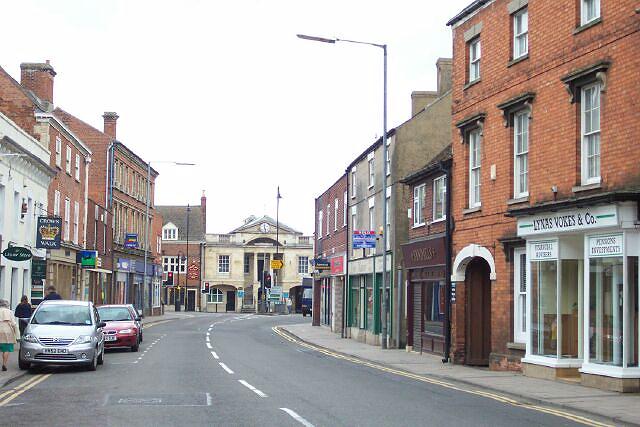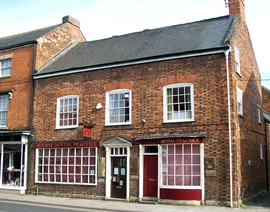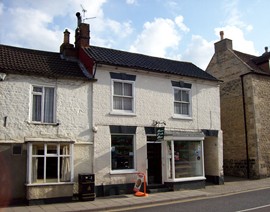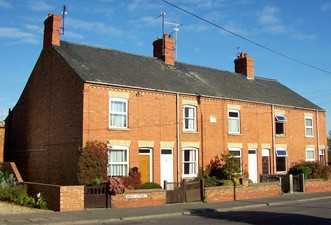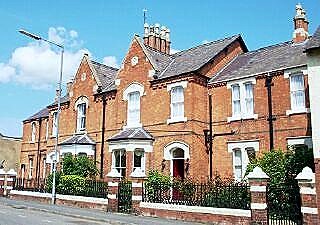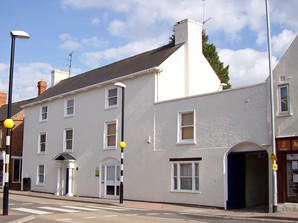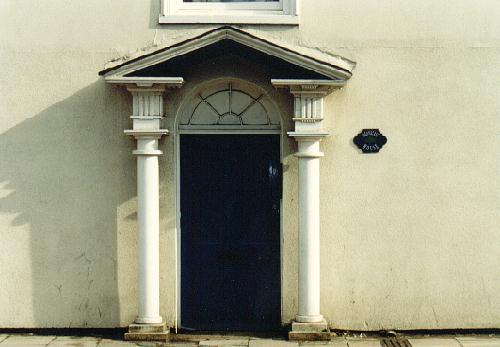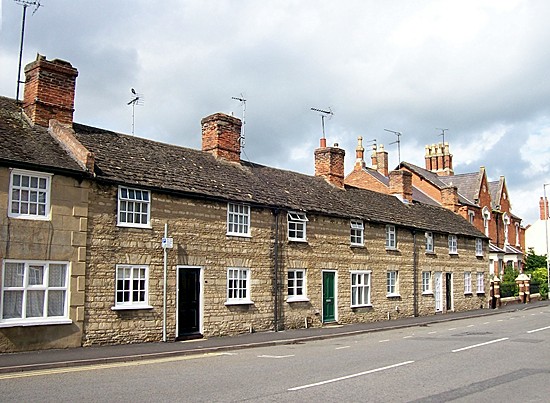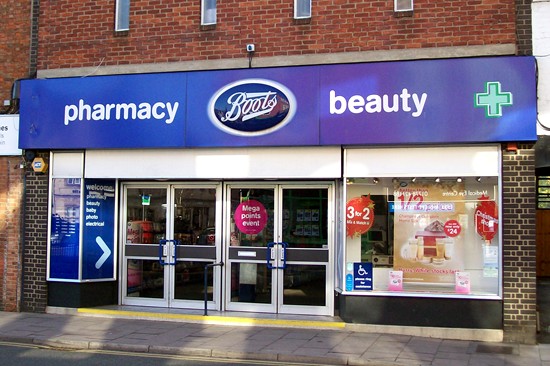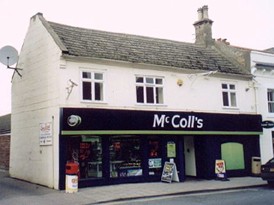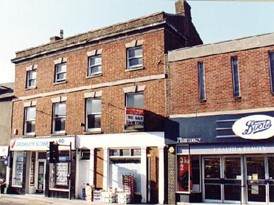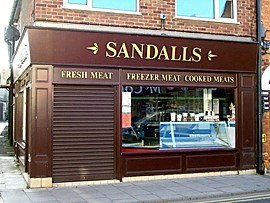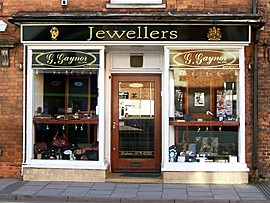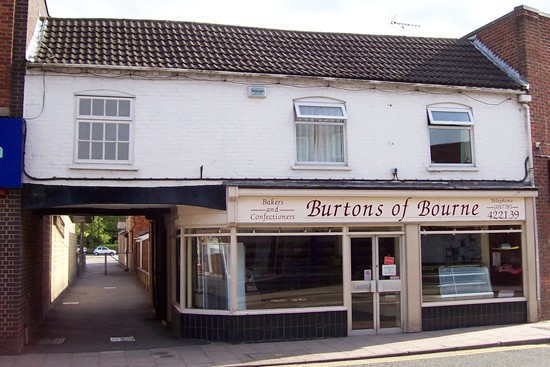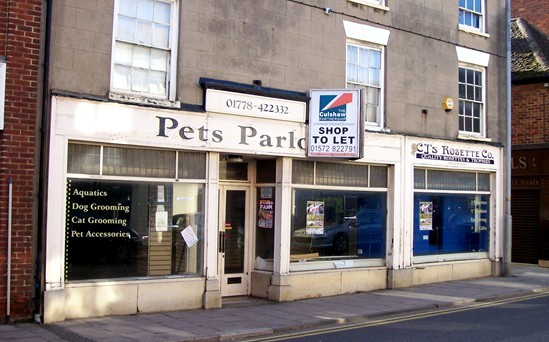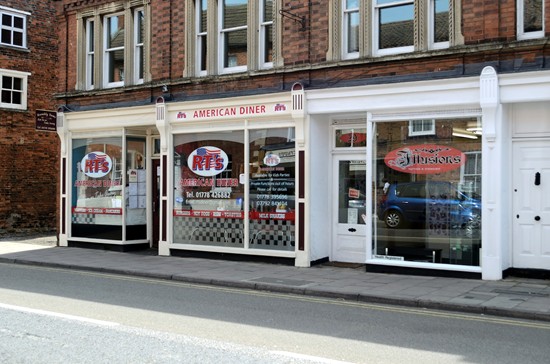|
West Street
In times past, West Street was a much sought after address and many of the town's most important people lived here. Today, it is one of Bourne's main thoroughfares, beginning at the town centre, and is actually the A151 trunk road from Spalding which goes on to Corby Glen and Colsterworth, and thence to the Great North Road or A1, although there is a turn off a mile outside town where the road becomes the A6121 into Stamford. It is therefore a popular route, particularly for commercial vehicles, and in the absence of an east-west bypass, and no prospect of one in the immediate future, Bourne will continue to be used as a through route by lorries and container vehicles, much to the detriment of those who live here.
Most of the buildings were originally private homes, some with shop premises below and the owners living above, but today they are devoted mainly to retail and commercial activities, offices and shops, although there are still some residential properties, mostly flats above and behind shops, with a few of the old town houses vainly trying to cling to their Victorian splendour amid an ever increasing flow of traffic that is constantly impeded by vehicles parked on the north side. Double yellow lines prohibit this on the south side but this restriction is frequently ignored. On busy days, or if roadworks are taking place or a delivery vehicle parks illegally for a long period, this stretch of road is liable to become a traffic jam at any moment and as a result, the rest of the town soon becomes gridlocked for long periods. Lawyers played an influential part in the life of 19th century Bourne, among them solicitor William David Bell who died in 1858. He was established in West Street for a quarter of a century, living in a three-storey early 19th century house of red brick and blue slate close to the Baptist Chapel and using the curious little building at the side as his offices after it was erected in 1834. A stone plaque bearing this date and his initials was originally set into the wall but has recently been removed and attached rather incongruously to the house that has now been converted into offices. The smaller building is finished in yellow brick and stone with an attractive roof pediment and stands close to the wall of the house as though it were attached to it although they are quite separate properties. After being vacated by the Bell family, it became a barber's shop and then the premises were used for a spell as an antiques shop by the Cliffe family who have lived opposite at Nos 29-31 West Street since 1877 but in recent years it has been a local outlet for a national chain of opticians. This business has now moved further down the road and it stood empty for a time before becoming a pawnshop in 2000 but this closed down in 2003.
The Old Maltings at the end of West Street is among the most imposing of the town’s historic buildings, particularly so because the red brick premises have been sympathetically restored for modern business use. The original owner was John Dove, a local farmer who brewed his own ale but the property was rebuilt in 1806, after a serious fire fifteen years earlier had destroyed part of the premises, and enlarged during the mid-19th century with the addition of wine and spirit vaults, a bottle and counting house and other ancillary buildings. By the 1960’s, the premises had become one of the few manually operated maltings left in the country using tools like the turning shovel, turning fork and floor plough on the malting floor. But business declined and the building became a depot and showroom for farm machinery and with part of it used for the manufacture of electronic control equipment although the premises are now fully owned by Warners Midlands plc and used as the headquarters for their expanding colour printing business. The old cottage at No 44 West Street was a farmhouse in 1790 but there may have been an earlier building on the site dating back to the beginning of the 18th century. It was used in recent years as the offices of North's hay and forage business that operated from the yard behind, now occupied by the Hereward Group Medical Practice. When the business closed, the cottage stood empty for several years before being purchased by the printing firm Warners Midlands plc who have premises opposite. The building was then totally refurbished during 1999-2000 and subsequently leased for use as an antiques shop trading under the name of Bourne Antiques & Arts and is now protected as a Grade II listed building.
The red brick that is seen so frequently in and around Bourne is used to its best effect in terraced houses such as those in Harrington Street and again here in West Street. This terrace of five houses with its blue slate roof was built in 1872, probably as an investment to produce a regular income from the rents, by William A Pochin, a prominent landowner who insisted that his initials be included on the date stone at the front of the terrace which he called Acacia Villas, a popular name for residential developments of the period to give an impression of comfort and gentility, although the inscription has been worn away by more than a century of wind and rain. His initials can also be found further down West Street at Numbers 30-32 which he also built in 1872. Saxonhurst House was once an imposing stone town house and the home of Thomas Moore Baxter, a partner in the mineral water business that brought prosperity to Bourne, until he died in 1920. It has since lost much of its original grandeur having become a rendered office block and painted an unsuitable cream colour. During the 19th century, the house was the residence of successive wealthy families, complete with coaching arch and stables at the rear, but in recent years, it stood empty and neglected for a long period until bought by local businessman Steve Singleton who restored and converted the neglected building into flats with the ground floor being leased to Lincolnshire County Council for use as a local office by the Registrar of Births, Marriages and Deaths, and although coaches no longer call here, the odd taxi can be seen bringing a bride for her wedding. The flat-roofed addition over the coaching entrance is typical of many town centre extensions allowed in Bourne during the 1960s before planning requirements became more stringent although the main door, enhanced with a broken pediment, sun burst and classical columns, remains virtually intact. This quaint building at No 20 West Street was constructed during the late 19th century as an addition to the law practice run by the Bell family which once occupied the large red brick property next door at No 18 West Street. During recent years (circa 1965), it was bought by the Cliffe family and used as an antique shop, later becoming an opticians and is now The End hair salon. Curiously, it was once mistakenly believed to have been the recruiting office for H Company of the 2nd Battalion, the Lincolnshire Volunteer Regiment. The story arose because a section of stone over the pediment bears part of a sign with lettering referring to the regiment. In fact, the sign was once on the front of the Vestry Hall in North Street which became the Drill Hall in 1899 but was removed when the hall was taken over as a military hospital during the First World War of 1914-18. The sign was dumped behind the hall and in 1945 it was retrieved as a suitable piece of scrap stone by builders to reinforce the parapet over the West Street shop that had become unsafe during a storm. The stone appeared to be unmarked when put in place but weathering over the years has exposed the lettering and so created a local legend. Among the most attractive buildings in West Street is a row of stone cottages, still serving as useful accommodation after 200 years. They date back to the 18th or early 19th century and are of coursed stone with a continuous roof of old slates and chimney stacks of red bricks. No 42 at the near end is cement rendered. Each property has two windows with sliding sashes and plain cottage doors and all have stone lintels although the ground floor windows in each one have been altered. Nevertheless, they are of sufficient historic interest to be preserved and the entire row is Grade II listed.
REVISED MAY 2014 See also Bourne House Crown Walk The Post Office No 6 West Street Monkstone House Private Schools The Bourne Institute The Quaker Meeting House The Cliffe shop fire West Street in Past Times West Street - then and now
Go to: Main Index |
||||||||||||||||||||||||||||||||||||||||||||||
